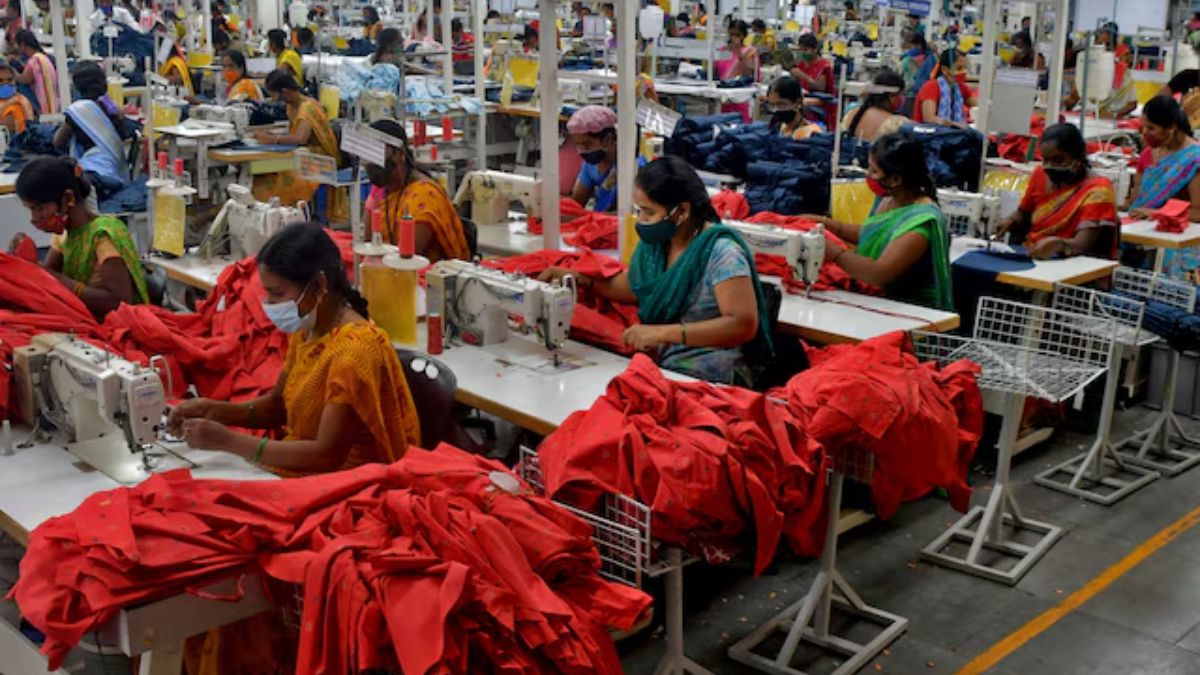For US President Donald Trump, tariffs don't have any basis in policy , and he has used them as part of a broader campaign against India. But India is not buckling under pressure even as he has sought to hit where it hurts the most.
With 50 per cent tariffs coming into effect on Wednesday, overall tariffs on critical sectors like textiles and seafood have risen to up to more than 60 per cent as these tariffs —25 per cent announced on July 31 and additional 25 per cent slapped on August 6 over India’s purchase of Russian oil— are on the top of pre-existing product-specific tariffs.
For textiles and garments, these pre-existing tariffs are in the 3-12 per cent range, taking final tariffs for many products well above 60 per cent. For seafood like shrimps, these pre-existing tariffs are 7 per cent, taking final tariffs to at least 57 per cent.
Just like agriculture and dairy, which the Narendra Modi government has vowed to keep out of any trade deal as a protective measure , textiles and seafood are also labour-intensive and politically sensitive sectors. In fact, the textile sector directly employs more than 45 million people, which makes it the second-largest employment generator in the country after agriculture, according to government data.
ALSO READ: Trump's tariff tirade risks undoing 3 decades of India-US partnership
Shrimp producers are often at the very bottom of the socioeconomic pyramid and therefore bound to be affected the most from American tariffs, according to Ram Singh, a professor of international trade and business at the Indian Institute of Foreign Trade (IIFT), Delhi.
Impact Shorts
More ShortsTrump’s two-pronged pressure campaign
With tariffs on textiles, Trump has sought to pressurise the Modi government by threatening millions of jobs across the country that depend on experts. The sector employs women —often from rural background— in large numbers.
With tariffs on seafood like shrimps, Trump has sought to put pressure directly on the ruling National Democratic Alliance (NDA).
Around 70 per cent of India’s shrimps are produced in Andhra Pradesh, the politically important state run by Prime Minister Modi’s ally Telugu Desam Party (TDP), which provided critical support in the 2024 general elections to form the government. N Chandrababu Naidu, the TDP leader and chief minister of Andhra Pradesh, has been a vocal supporter of shrimp-producers of his state.
With tariffs, Trump is not just putting economic pressure on India but political pressure on the government as well.
ALSO READ — Beyond tariffs: Trump’s open embrace of jihadist forces across Asia a new headache for India
However, the Modi government has maintained that it has some red lines, such as the exclusion of agriculture and dairy from trade deals, that it would respect at all costs. It has also taken a slew of decisions to minimise the impact of tariffs , such as making the most of trade deals with the United Kingdom and the European Free Trade Association (EFTA) — comprising Switzerland, Norway, Iceland, and Liechtenstein — to seek new markets for exports.
Separately, the Modi government has announced GST reforms aimed at boosting consumption-led growth to support the economy. Economists have estimated that the consumption boost could halve the impact of Trump’s tariffs on India’s GDP growth — they had previously projected that 50 per cent American tariffs could drag down India’s GDP growth by up to 1 per cent.
To diversify exports outside of the United States, the government has also sped up trade negotiations with a host of countries and blocs, such as South American nations of Peru and Chile; the European Union (EU); and the Eurasian Economic Union (EEU).
India has also tapped into its historic partnership with Russia and sought to capitalise on the improvement in the relationship with China to not just seek new export destinations but also seek new investments.
But textiles & seafood sectors need early help
These plans are unlikely to materialise quick enough to be of any help to shrimp producers largely dependent on exports.
“Shrimp producers are at the bottom of the socioeconomic pyramid. Around half of all Indian shrimps are exported to the United States. While consumption growth can balance the GDP growth numbers and new markets may be found for other exports, shrimp producers are neither going to benefit from domestic consumption growth nor they can wait for long-term solutions. Moreover, they cannot wait for India-US tensions to reduce as shelf-life of shrimps is not much. They need immediate support,” says Singh, the international trade expert at IIFT Delhi.
Firstpost has previously reported that the Modi government is considering a financial support package for sectors affected the most by Trump's tariffs , such as shrimp producers and textile exporters.
Even though India is engaging with Eurasian countries and Russia, India is unlikely to make inroads there as those countries neither have a taste for Indian seafood nor Indian textiles and garments, according to a person aware of market trends in those countries.
However, Singh says that Indian seafood, such as shrimps, could find new markets in East Asia, such as China and Japan.
Singh further says that the recent improvement of India-China relationship could lead to a quid pro quo-type arrangement between the two countries in the context of the common challenge from American tariffs.


)

)
)
)
)
)
)
)
)



